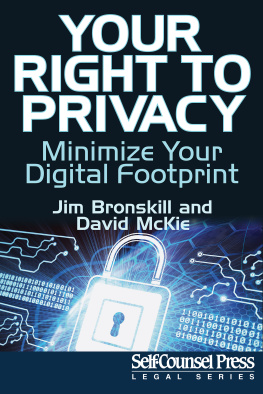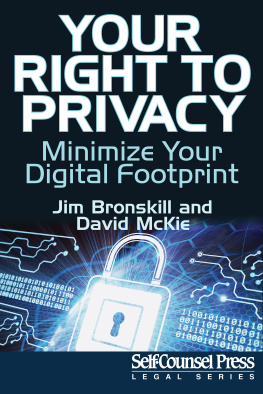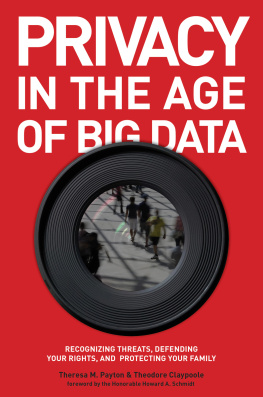Copyright
Acquiring Editor:Chris Katsaropoulos
Editorial Project Manager:Benjamin Rearick
Project Manager:Priya Kumaraguruparan
Designer:Matthew Limbert
Syngress is an imprint of Elsevier
225 Wyman Street, Waltham, MA 02451, USA
Copyright 2014 Elsevier Inc. All rights reserved
No part of this publication may be reproduced or transmitted in any form or by any means, electronic or mechanical, including photocopying, recording, or any information storage and retrieval system, without permission in writing from the publisher. Details on how to seek permission, further information about the Publishers permissions policies and our arrangements with organizations such as the Copyright Clearance Center and the Copyright Licensing Agency, can be found at our website: www.elsevier.com/permissions.
This book and the individual contributions contained in it are protected under copyright by the Publisher (other than as may be noted herein).
Notices
Knowledge and best practice in this field are constantly changing. As new research and experience broaden our understanding, changes in research methods or professional practices, may become necessary. Practitioners and researchers must always rely on their own experience and knowledge in evaluating and using any information or methods described here in. In using such information or methods they should be mindful of their own safety and the safety of others, including parties for whom they have a professional responsibility.
To the fullest extent of the law, neither the Publisher nor the authors, contributors, or editors, assume any liability for any injury and/or damage to persons or property as a matter of products liability, negligence or otherwise, or from any use or operation of any methods, products, instructions, or ideas contained in the material herein.
Library of Congress Cataloging-in-Publication Data
Application Submitted
British Library Cataloguing-in-Publication Data
A catalogue record for this book is available from the British Library
ISBN: 978-0-12-800011-3
Printed and bound in the United States of America
14 15 16 17 18 10 9 8 7 6 5 4 3 2 1

For information on all Syngress publications, visit our website at store.elsevier.com/syngress
Dedication
This book is dedicated to my lovely wife Kris, who is gracious enough to allow me to spend every waking moment working on this and to spend countless nights, weekends, and entire weeks traveling in support of the Microsoft SQL Server community and my day job, which I enjoy to a level that probably isnt normal.
Acknowledgments
Id like to thank everyone who was involved in putting this book together (if I forgot you on this list, sorry). This includes my editors Ben, Chris, and Heather, and my friend and technical editor Thomas LaRock, all of whom helped me out greatly in the development process.
Author Biography
Denny Cherry is the owner and principal consultant for Denny Cherry & Associates Consulting and has over a decade of experience working with platforms such as Microsoft SQL Server, Hyper-V, vSphere, and Enterprise Storage solutions. Dennys areas of technical expertise include system architecture, performance tuning, security, replication, and troubleshooting. He currently holds several of the Microsoft Certifications related to SQL Server for versions 2000 through 2008 including the Microsoft Certified Master as well as being a Microsoft MVP for several years. Denny has written several books and dozens of technical articles on SQL Server management and how SQL Server integrates with various other technologies.
Introduction
This book looks at the problems associated with data privacy and specifically how we keep our data private from others who shouldnt be accessing the data.
In the first chapter, , we look at how much information you should be storing online and the risks of storing that information online.
In , we review the guidelines for selecting usernames and passwords as well as options for two-factor authentications.
In , we look at the home computer network. The home computer network has many weak points such as the router, the Wi-Fi network, and the devices on the home network.
looks at the weaknesses within the home computer as well as how to encrypt all the sensitive data that is stored on your computer.
talks about how to limit the information you post online.
reviews the various ways that people and governments are able to watch what you do online.
The final chapter, , looks at the specific laws and programs that have been discovered around the spring and summer of 2013 that various governments are able to use to monitor what people around the world do.
Chapter 1
Storing Your Personal Information Online
Abstract
This chapter talks about what information you should and shouldnt be storing online.
Keywords
Facebook; challenge questions and answers; online
Information in This Chapter
How much information you should share with companies
Risks of sharing too much information online
Knowing how companies protect your information
Cookies and websites
This chapter talks about the risks of storing information online and how we can mitigate some of those risks.
Storing your personal information online
In the modern world, we all end up storing information online, even if we dont know that we are. Every company that you do business with stores information about their customers, including you, in a computer on their network. Every website that you visit on the Internet be it from your desktop computer, laptop computer, cell phone, library computer, and Internet caf is storing information about you in some form or another. That computer or system of computers in some cases runs a database that allows the customer service, sales, marketing, etc., staff to find customer information, run reports on purchase history, etc. Even when you do business with companies in person and not via the Internet, you will have information stored about your purchases within their systems.
The perfect example of this is the customer loyalty cards that are given out by grocery stores. These cards are very useful for us the customers because it gives us access to discounts that we wouldnt normally have access to without having to cut coupons and remember to bring them in. The information that the store gathers via these loyalty programs tells them everything about their customers, their shopping habits, and so on.
Note
What companies can do with this information
One of the most famous problems that has become visible to the general public happened with the large retailer. Target started sending coupons based on personal shopping habits that they tracked via their loyalty program. One specific customer, who lived with her father, began receiving coupons for prenatal vitamins and baby supplies. The father was quite upset that Target was sending his daughter, who was under the age of 18, these coupons so he went to the local Target store and complained to the store manager. The daughter then had to explain to her father that she was indeed pregnant.










